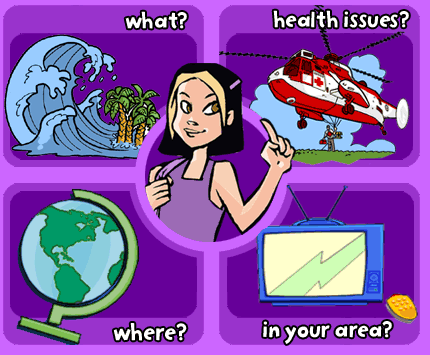
Here at home, most Americans were nearing the end of their holiday celebrations and getting ready to welcome in the new year of 2005. On the other side of the globe, off the western coast of Indonesia, the ground suddenly shook. It had been hit with one of the most powerful earthquakes ever measured — 9.0 on the Richter scale. Because this tremendously strong earthquake happened deep in the Indian Ocean, it generated a powerful sea wave called a tsunami and led to one of the deadliest natural disasters in modern history.
Waves of up to 50 feet high hit more than 11 countries in Asia and Africa, many of them thousands of miles away from the earthquake. More than 200,000 people died as a result. Many drowned, and others were killed when buildings and other structures collapsed after being hit by the waves of water. But the problems didn't end with the tsunami itself. Survivers faced a big risk of infectious disease for three reasons: so many people were killed; basic electric, water and sewage services were destroyed; and food and water supplies were polluted.
Let's take a look at what tsunamis are and how they can affect the health of so many people directly in the path of the tsunami.
